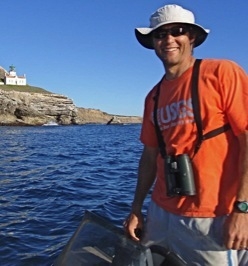
Senior Ecologist, US Geological Survey & Adjunct Faculty, UCSB
I grew up in Southern California, but left as soon as it was legally possible. I’ve been in Santa Barbara since 1981, where I got a bachelor’s degree in aquatic biology, then a master’s degree in zoology, then a PhD. in ecology, then eventually I found a job that would let me stay forever.
I’m lucky to now have a permanent GS-15 research position with the world-renowned US Geological Survey. My main expertise is with parasites. I also work on the conservation of threatened species like snowy plovers, abalone, tidewater gobies, and sea otters. I don’t presently teach any courses, but I do mentor students getting their PhD in ecology at UCSB.
My wife runs a nature reserve a couple miles from the UCSB campus where I work at the Marine Science Institute. We also run our own 160 acre nature reserve in the Santa Ynez Mountains. Our two daughters keep us busy.
I get to travel to some amazing places and SCUBA dive when I work. For fun, I surf near campus and during my travels.
External Website/s:
Email:
Phone:
805 893 8778
Mailing Address:
UCSB Marine Science Institute
Bldg 520 Rm 4002 Fl 4L
Santa Barbara, CA 93106-6150
United States
